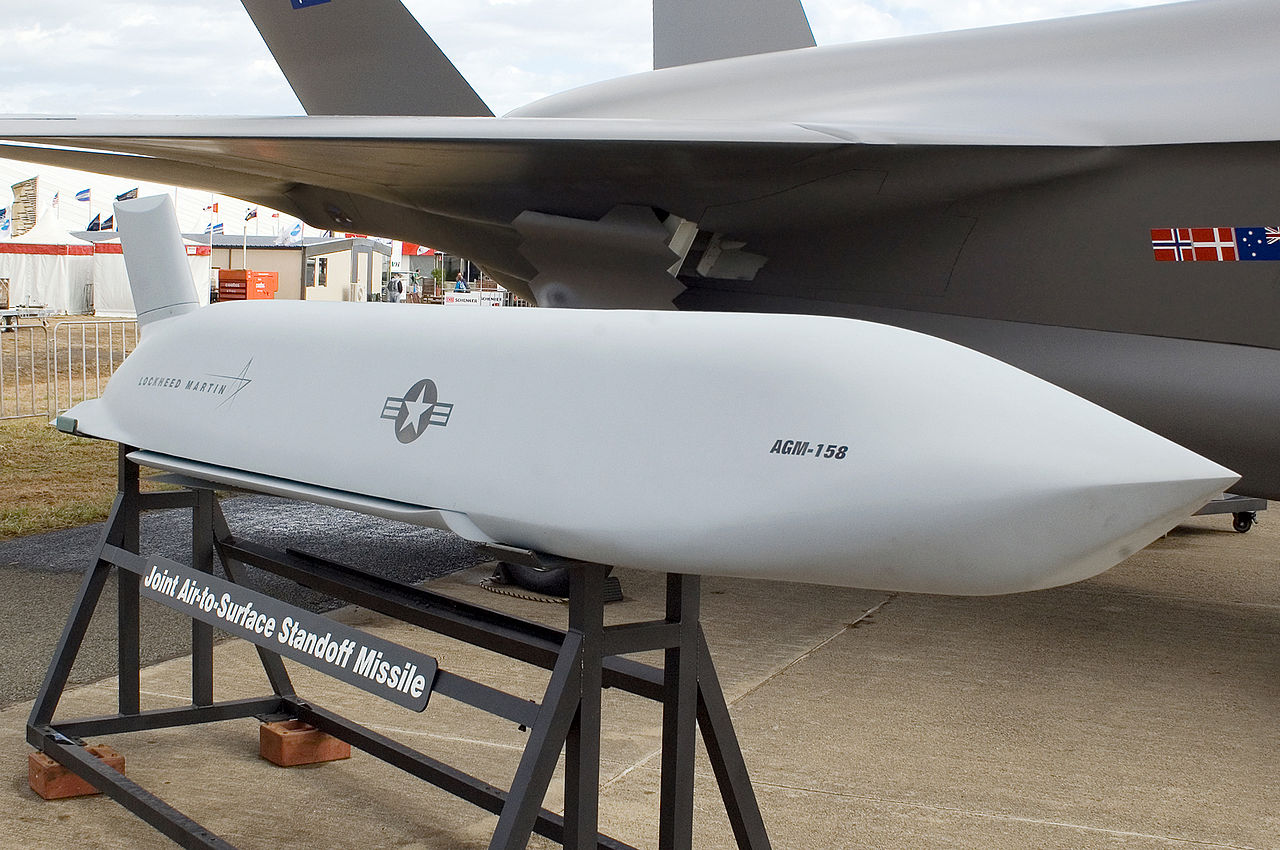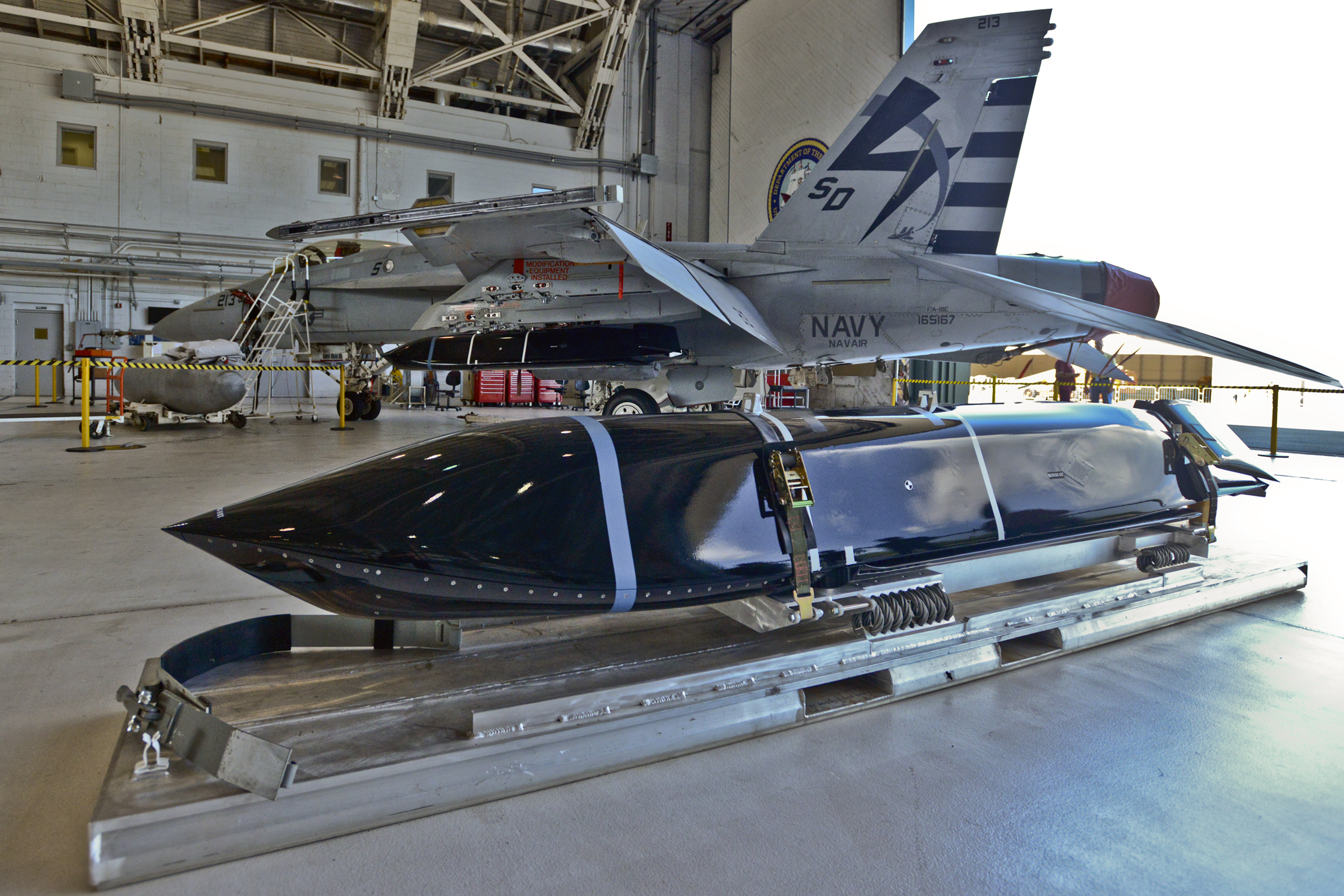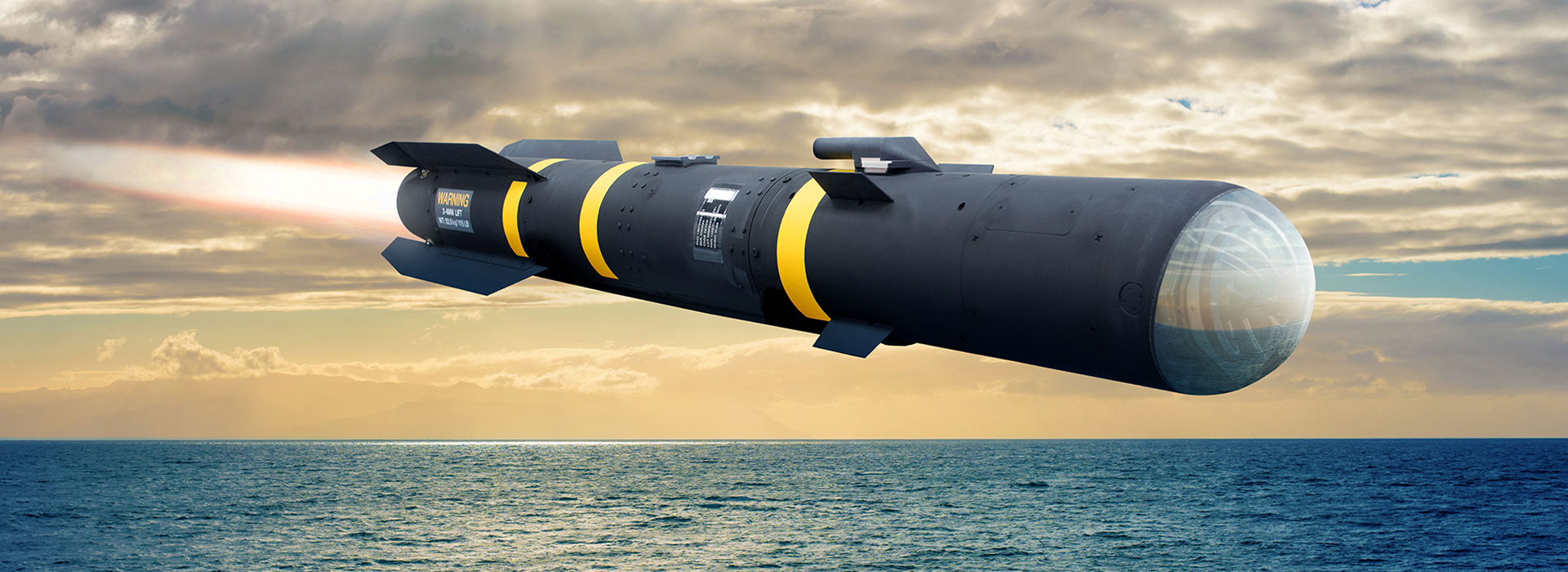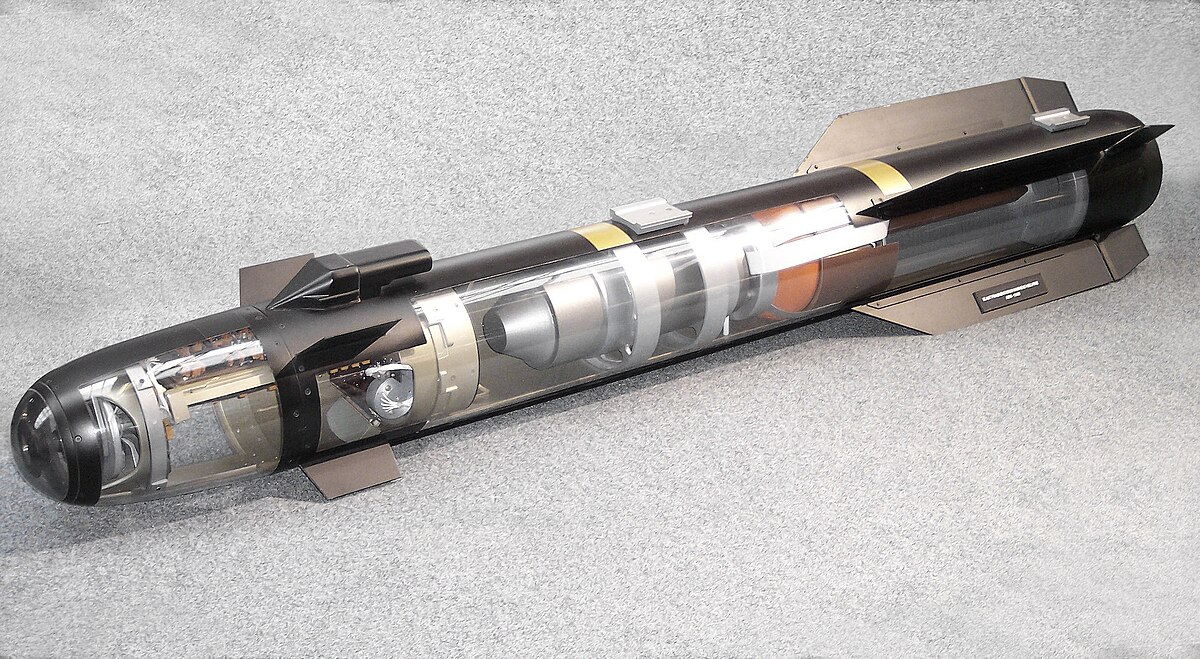Bolstering the firepower of its fifth-generation stealthy F-35 Joint Strike Fighter, the US Navy is now adding four new air-to-surface missiles to the aircraft, including the stealthy AGM-158 Joint Air-to-Surface Standoff Missile (JASSM).
1st Time Ever, F-22 Raptors Get Refueled By A Commercial Tanker; Here Is Why It’s A Big Deal For The USAF
Besides the AGM-158 Joint Air-to-Surface Standoff Missile (JASSM), the US Navy is planning to add three more weapons: the AGM-158C Long-Range Anti-Ship Missile (LRASM) which is a maritime strike version of the JASSM, the AGM-179 Joint Air-to-Ground Missile (JAGM) which is a precision-guided munition, and the AGM-114 Hellfire air-to-ground missile.
Except for the Hellfire, all other missiles being added to the aircraft have been a subject of discussion for a while now. The Naval Air Warfare Center Weapons Division (NAWCWD) China Lake recently announced that it plans to hire Lockheed Martin, which manufactures all four missiles, to provide research, development, test, and evaluation (RDT&E) services.
In addition to modifying the JASSM, LRASM, JAGM, and Hellfire for use by the F-35, these services “will provide design and development studies, technology demonstrations, and engineering services for rapid technology development.”
The AGM-158 JASSM would be a significant addition, providing the “stealth on stealth” advantage to the US Navy as it accrues capabilities against near-peer adversaries in China. The JASSM is an autonomous, long-range, air-to-ground, precision standoff missile designed to evade missile defenses. It has excellent capability and accuracy in eliminating both stationary and mobile targets.
The F-35 Joint Strike Fighter is a stealth aircraft that can fly close to the enemy’s borders or even inside its territories without being intercepted by its radars. So, a stealth fighter armed with a stealth cruise missile might be able to strike assets deep inside the enemy territory.
It would essentially offer a reliable way to attack critical enemy targets at standoff ranges, such as taking down or weakening an adversarial anti-access/area denial (A2/AD) network. With its vertical tail and flip-out wings, the JASSM comes equipped with a blast fragmentation warhead and dual-mode penetrator. The missile weighs about 1,000 kilograms and can carry warheads weighing up to 450 kilograms.

The US military has been integrating its F-35 stealth platform with low-observable missiles amid the rising threat of a conflict with China in the Indo-Pacific. In August last year, it was revealed that the US Air Force tested the AGM-158B Joint Air-to-Surface Standoff Missile-Extended Range (JASSM-ER) stealthy cruise missile from a B-2 stealth bomber in December 2021.
A military expert told EurAsian Times, “Being a subsonic (comparatively slower) stealth missile, the JASSM’s whole flight path is hidden from enemy radars. Its diminutive stature turns to its benefit even as it peeks over the horizon. When the missile appears over the radar, it will still be a small target so that it won’t be seen. There won’t be much time for reaction because the radar won’t pick it up until the last two to three kilometers, by which point it will be too late.”
The F-35 is designed to destroy enemy targets while simultaneously avoiding detection. These missions are paradoxical because of the unique requirements of stealth: a plane’s ability to maintain stealth is compromised by external weapons, increasing radar visibility. On the other hand, a fighter’s capacity to carry only internal weapons is restricted.
In the face of these challenges, the integration of cutting-edge weaponry into the F-35 fighter jet is an attempt by the service to counter the threats posed by adversaries like China and Russia amid rising tensions.
New Missiles For US Navy’s F-35 Joint Strike Fighter
Another missile being added to the arsenal of the F-35 is the Long Range Anti-Ship Missile (LRASM). Although the LRASM is based on the JASSM, its primary purpose at the time of development was to target marine targets, such as highly valuable surface warships.
Ukraine’s Honeymoon With US Over! West Tired Of Zelensky’s Repeated Demand For Money & Weapons?
Like the JASSM, it is a subsonic standoff weapon with extremely sophisticated guidance and targeting systems and has stealth. In July this year, the Naval Air Systems Command issued a pre-solicitation notice to find suppliers for the Long Range Anti-ship Missile (LRASM) integration of the US Navy on the F-35 platform.

Artist images of an F-35 fitted with two LRASMs were revealed by Lockheed Martin at the 2021 Surface Navy Association symposium, suggesting that the service has been contemplating its induction on the stealthy fighter for quite some time.
LRASM is presently integrated into US Air Force aircraft, the B-1B Lancer, which cleared Early Operational Capability (EOC) with the missile in 2017, and the US Navy’s F/A-18E/F Super Hornet, which earned EOC in December 2019. The missile is reportedly being integrated on the P-8A Poseidon and the B-52 Stratofortress of the United States Air Force, in addition to these platforms.

Another missile that the F-35 is getting is the AGM-179 Joint Air-to-Ground Missile. Although designed to hit targets closer than the above missiles, the JAGM provides a ‘fire and forget’ capability for the F-35 while improving pilot survivability against mobile or stationary targets in inclement weather. JAGM’s minimum target range is around ten miles when launched from the air.
Known as JAGM-F or JAGM Increment 3, the air-launched variant of JAGM has been tested from Navy F/A-18E/F Super Hornets and is scheduled for integration aboard US Marine Corps F-35B and AV-8B Harrier II aircraft. The JAGM may be launched from the F-35’s interior weapons bays, unlike the larger JASSM and LRSAM. However, there is little clarity on how the US Navy and Lockheed Martin would do this.
Although the F-35, specifically F-35B, had previously been linked to the JAGM, this most recent disclosure might be the first to confirm the missile’s incorporation officially.
The last of the four, the Hellfire, is a weapon that has never before been connected to any F-35 variant. The Hellfire was initially meant to be replaced by the JAGM, but that hasn’t happened yet.

The Hellfire is a subsonic, air-to-ground, laser-guided missile with a substantial anti-tank capability. Moreover, it can be an air-to-air weapon against fixed-wing aircraft with slow movements or helicopters.
The Hellfire is a missile that may be employed both air-to-ground and air-to-air. With the Air-to-Ground (AGM)-114, you can hit targets like helicopters, bunkers, and tanks with pinpoint accuracy.
It was unexpected that the AGM-114 Hellfire would be included in the F-35’s arsenal, but it does provide a dependable alternative that expands the fighter’s tactical capabilities. Comparable in size to the JAGM, the Hellfire would probably be appropriate for internal transportation in the F-35.
Although it is just conjecture, the JAGM, and Hellfire may be carried internally, while the JASSM and LRASM might be added to underwing pylons. The addition of these four missiles to the F-35 fighter jet seems to be a part of a long-drawn effort to add more firepower and make the aircraft more lethal, as has been seen with the addition of laser-guided bombs and JADM among others, to the stealthy jet.
- Contact the author at sakshi.tiwari9555 (at) gmail.com
- Follow EurAsian Times on Google News




